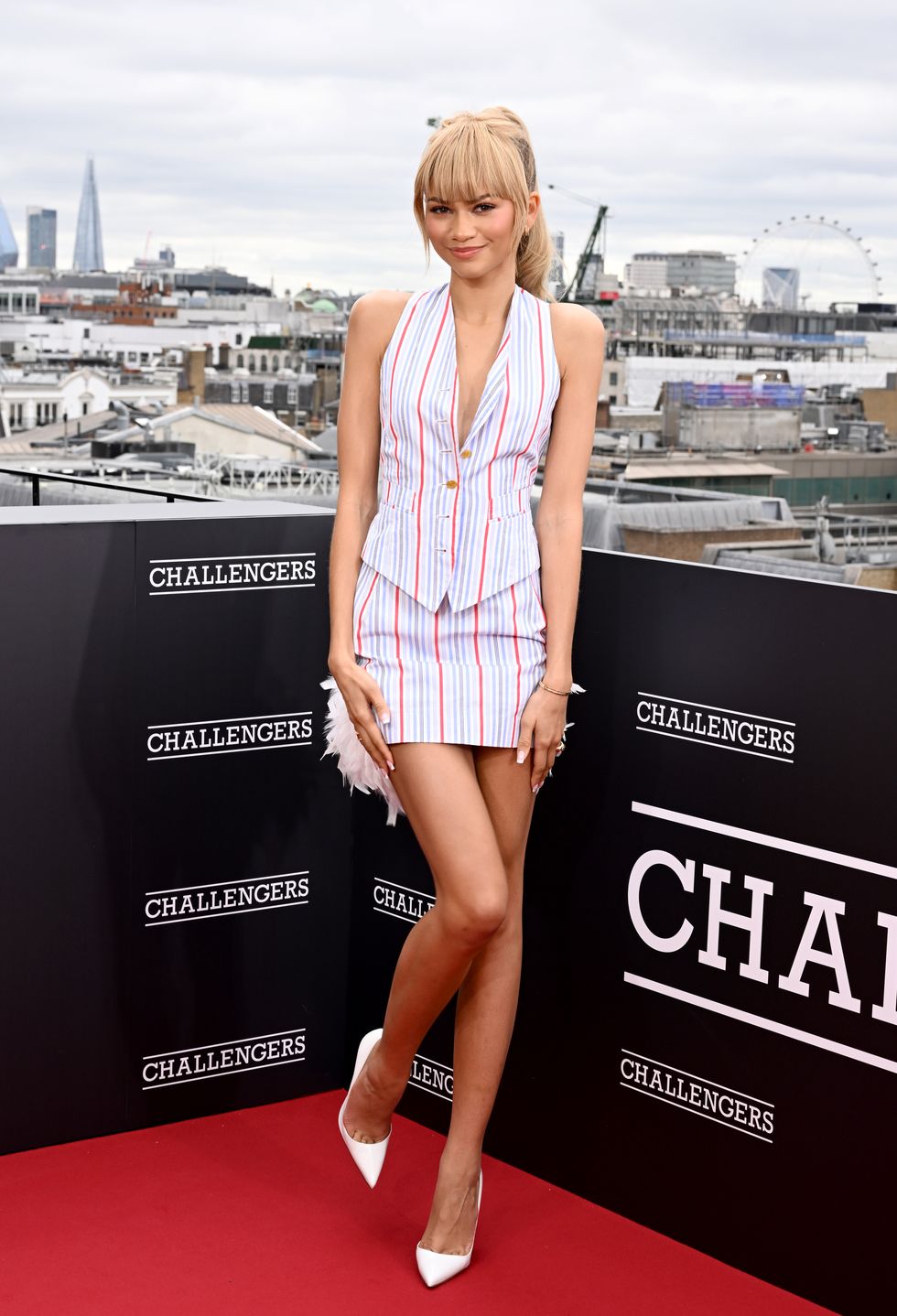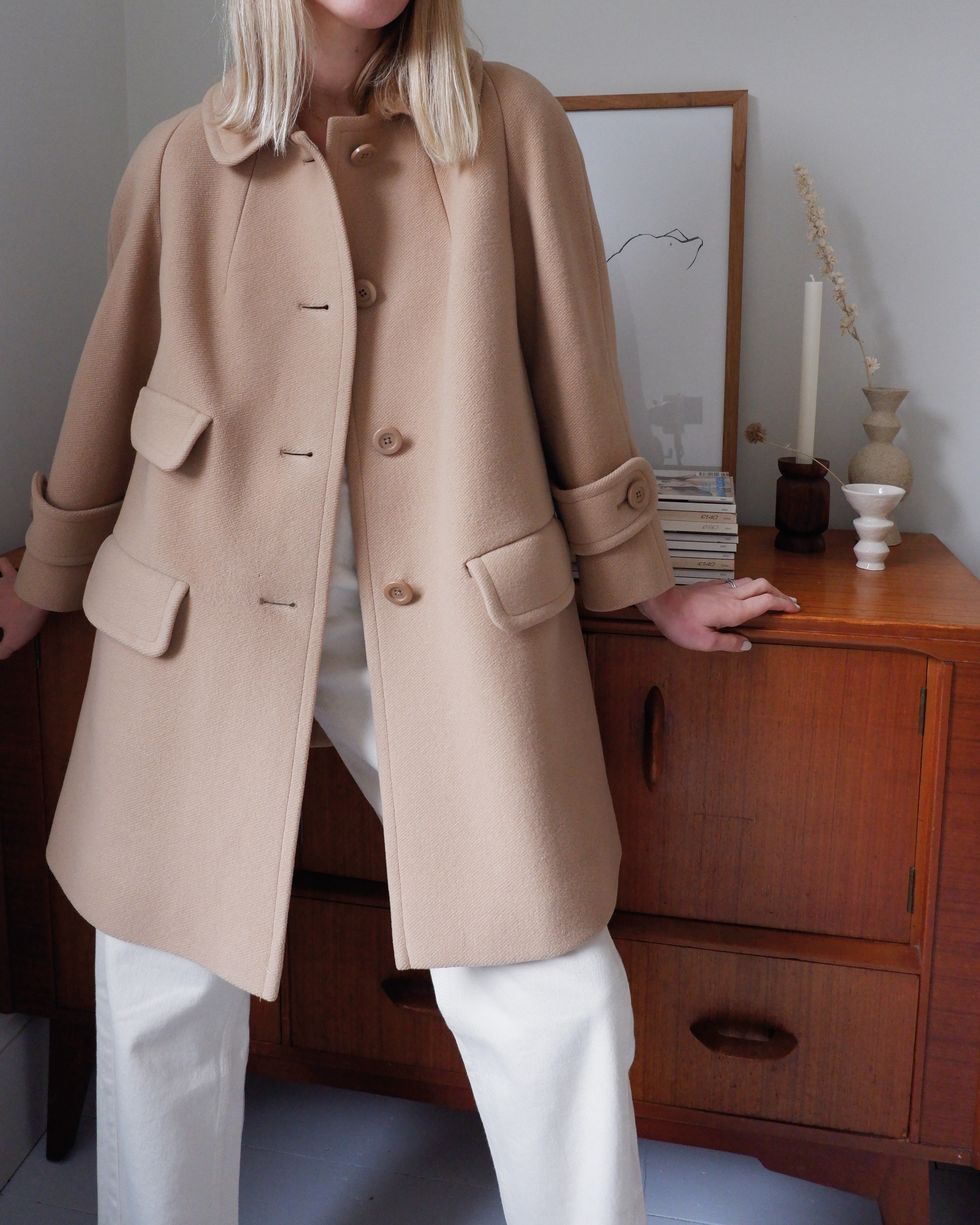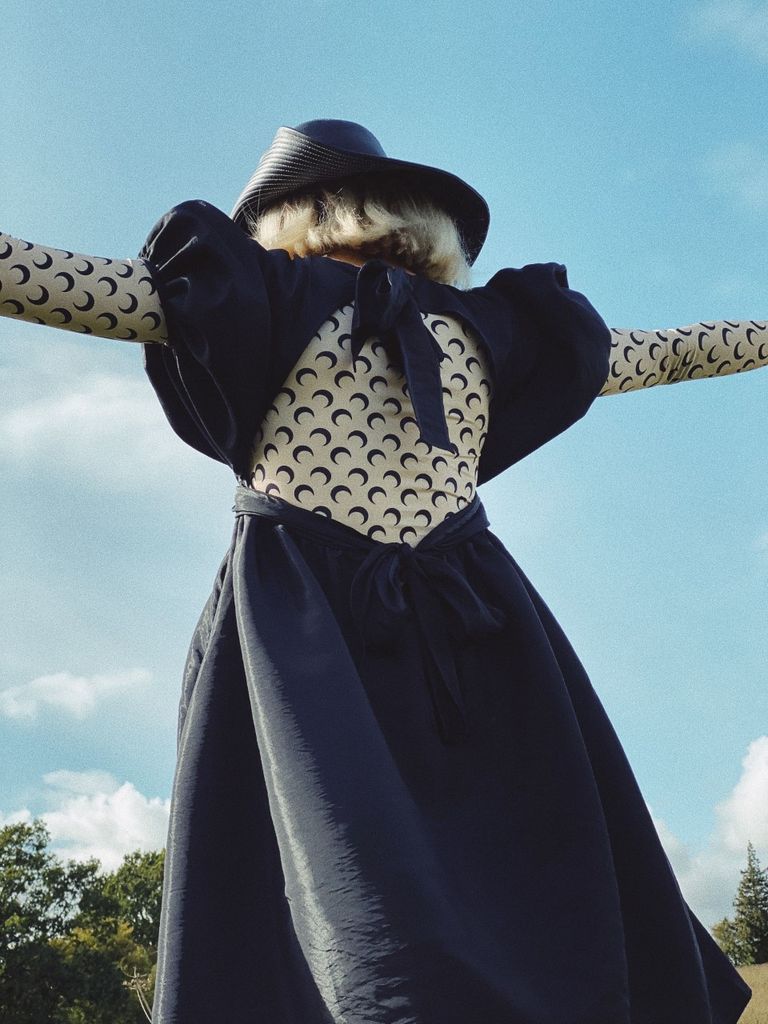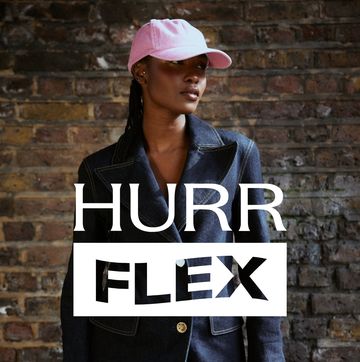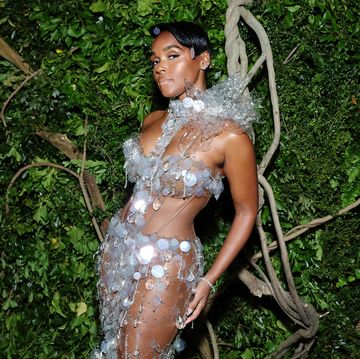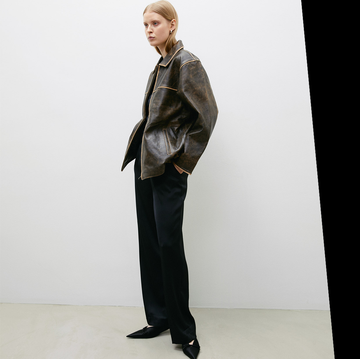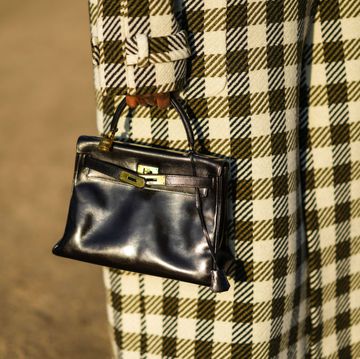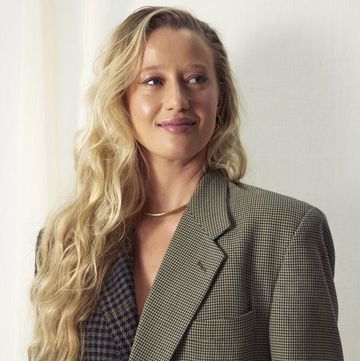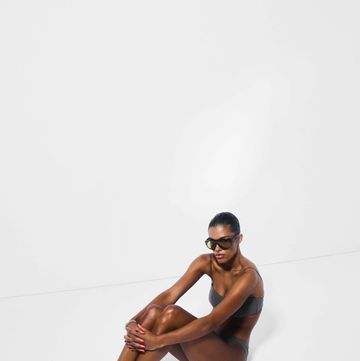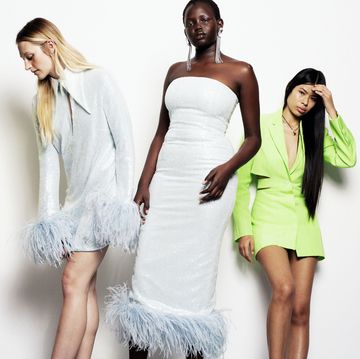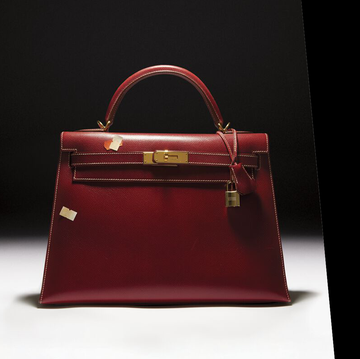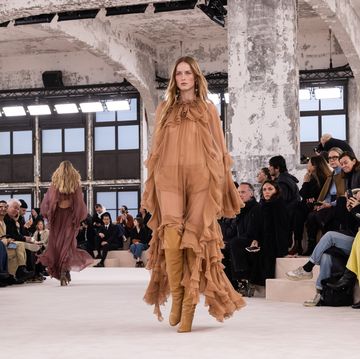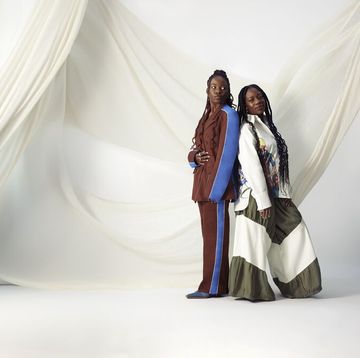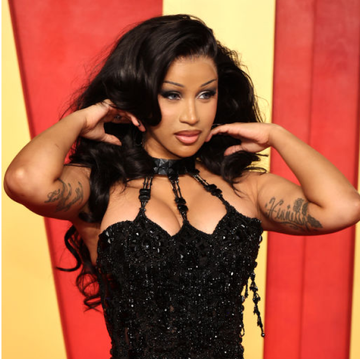Tackling your carbon footprint can seem like a mammoth task, and perhaps it is.
Between switching to seasonal vegetables and turning down work trips abroad, the ever-growing and disparate list of ways we're encouraged to be more green can feel daunting.
But there's one, cohesive, relatively easy and potentially money-saving (or earning) way to drastically reduce your own carbon footprint: engage in circular fashion.
What Is Circular Fashion?
Circular fashion is a re-routing of the traditional 'cradle to grave' journey for pieces of clothing, shoes or accessories.
As it stands, most fashion products are made from new textiles, sold, worn, discarded and sent, eventually, to landfill (an estimated £140 million worth of clothing goes into landfill annually in the UK), or worse, they are incinerated.
Circular fashion looks to disrupt that linear trajectory, keeping clothing and materials in use through recycling, repurposing and rewearing, avoiding where possible making completely 'new' products and reducing the amount of ecologically harmful waste.
'Circular fashion means designing out waste,' Charlotte Turner, Head of Sustainable Fashion and Textiles at Eco-Age tells us. 'Designing products that can naturally break down without causing harm, or that can be disassembled and recreated, or recycled without losing quality, so that we are only working with what we have already.'
'The idea is to reduce the amount of resources we are using up, as well as the amount of materials and products that end up in landfill.'
Where Did The Phrase 'Circular Fashion' Come From?
Brismar, owner of the consultancy firm Green Strategy, coined the term ‘Circular Fashion’ back in June of 2014.
‘It can be defined, ‘ Dr Anna Brismar details, ‘as clothes, shoes or accessories that are designed, sourced, produced and provided with the intention to be used and circulated responsibly and effectively in society for as long as possible in their most valuable form, and hereafter return safely to the biosphere when no longer of human use.’
How Can I Engage In Circular Fashion?
Heard of the saying 'reduce, reuse, recycle'?
In 2020, you should already be considering cutting down the number of items you purchase full stop. We don't need a new outfit for every Friday night, really we don't.
Fashion's current rate of growth is immense, with 114 billion items of clothing sold globally last year (that's 15 new garments each). Buying less (a.k.a reducing), and rewearing favourite items from the back of the wardrobe (a.k.a. reusing) will help slow fast fashion down, reducing overproduction and all the resulting issues.
Buying less should also mean buying better, and what's better than items that have already stood the test of time?
Shop Second-Hand And Vintage
While years of over-production (and under-wearing) is largely bad news, one perk is that there are plenty of clothes already out there looking to be re-homed. This is the recycling part.
There are almost as many ways to buy pre-loved clothing as there are items to buy.
Local charity shops are a great place to start, as you're killing two birds with one stone by keeping clothes from landfill and giving money to charity. They are often your cheapest option, and are the best at providing a wide range of sizing.
Physical vintage stores like House of Vintage and Seretonin Vintage in London are a great place to spend a few hours, and have the advantage of letting you try on pieces as well as feeling the fabric before your purchase.
While online vintage and second-hand platforms, like Another Matinee, Retold and One Scoop Store, proffer the most curated experience.
'I have so many customers write to me and say that before finding Retold they would never have considered buying vintage.' Founder of Instagram-famous vintage store Retold, Clare Lewis tells ELLE UK, 'They either didn’t think it was for them because of their personal style and aesthetic or they just had preconceptions about second-hand clothing in general.
'Now these customers enjoy the experience of buying vintage, which I love so much, and because of this continue to buy vintage. Starting Retold was always about making vintage as inspiring and accessible to as many people as possible in an effort to get them to make the switch from fast fashion.'
Rent Clothing
We are buying more clothes than ever before, but we also keeping them half as long. 'By wearing one item of clothing for 9 months longer', Big Think reports, 'a person can actually reduce his or her carbon footprint by 30 percent.'
Which is where clothing rental comes into play.
If you have a gorgeous item hanging in your wardrobe not getting enough outings (we see you Boxing Day sale purchase), or an event coming up that you know will require a one-wear affair, then may we suggest renting?
'Rental fashion is a great solution for lots of occasions when we risk ending up with unworn clothes lingering in our wardrobes, or if we really want to wear something we couldn’t justify or afford to buy. ' Eco-Age's Turner told us.
Georgie Hyatt, co-founder of cult label rental service Rotaro, expounds the value of renting in the ecosystem of sustainable and circular fashion, explaining, 'Rental is a vital piece of the future of fashion, alongside second hand and sustainable brands. The ideal future wardrobe looks like this: two thirds well-made and vintage clothing, and one third rented.'
From peer-to-peer platforms like Hurr and By Rotation, to sites which hold stock centrally like Cocoon and Rotaro, there are so many options to choose from, whether you want to earn money renting out your own clothes, or want a slice of the designer pie at a fraction of the price.
It's worth pointing out that rental fashion is not necessarily a catch-all answer to the question of sustainability.
'It isn’t the perfect solution,' Turner points out, 'as there’s a lot of dry cleaning and transportation involved – and items won't necessarily be recycled or reused when they’re no longer rentable. That being said, there is absolutely a place for rental fashion.'
Though, Hyatt has a response to that particular criticism: 'Renting with Rotaro is as sustainable as sharing wardrobes with a friend. We use carbon-neutral delivery (bicycles and electric vehicles), biodegradable and recycled packaging and only wet-wash, which is a more eco-friendly way to launder clothing.'
'Renting with Rotaro is an answer to the desire for wardrobe-newness,' the entrepreneur concludes, 'where people are still free to express themselves through new styles, trends and brands without having to buy and creating waste.'
Use Resale Sites
If rental is too ephemeral for you, then it's back to second-hand. Though, you needn't just buy - contribute to the circular ecosystem by selling, too.
The secondhand clothes market is expected to nearly double by 2023. On eBay, a pre-owned fashion item is purchased every second and you can get in on the action in so many different of ways.
Passing on items that no longer fit your body or your style sensibility ensures the product gets to live a second life, hopefully in a loving new home.
'I love to resell things,' blogger and podcast co-host Charlotte Jacklin tells us, 'I do it mainly through Depop and eBay. It means the item has a longer life, and as I am in a privileged position where I can access a higher price point and quality of clothing, I know it makes it a lot more accessible for some people to enter the circular economy.
'Also, lots of my items are a size 16 or 18, which can be harder to come across second hand.'
Also, by reselling your items you may well earn a pretty penny. Don't believe us? Depop told us their top sellers earn up to £2,000 per month.
'Reselling second-hand fashion opens an entirely new market for e-commerce,' founding member of resale startup app Thrift+ Kay Hubbard explains. 'Giving a second life to your clothing also has the power to bring new value to society. At Thrift+, your donated clothes raise valuable funds for your chosen charity while earning yourself credit for to spend on our app. By partnering with retailers like Farfetch we have proven that there is a solution to returned stock, allowing companies to become fully circular.'
From resale giants eBay and Depop, to luxury sites like Vestiaire, to smaller start-ups like Thrift+ and Cudoni, there is a dedicated resale platform for every sensibility.
There is also a growing movement for utilising the social media platform that a lot of us spend the lion's share of our screen time on: Instagram.
Whether you are an influencer, fashion editor or school teacher, putting images of your own clothes up for sale on your stories (or even grid) for followers to snap up is a great, and easy, way to make some extra cash, while fostering a sense of community online.
Chef Tess Ward recently used the app to make a dent in the 'insane amount of clothes [she has] accumulated from events and shoots,' by selling some to her 151k followers on Instagram.
'Why not allow someone else the joy of buying designer pieces and items they like?' Ward explains to ELLE UK, 'It feels good to do.'
Buy From Circular Fashion Brands
Size (as Jacklin pointed out), time restrictions, physical ability and style can preclude people from buying preloved clothing, and even the UK fashion rental sector leaves a lot to be desired regarding true inclusivity.
Plus, there is also an argument that we should still be supporting creativity through new designs.
Thankfully, there are brands out there that already engage in circular practices.
Young brands like MaisonCléo, AVAVAV and Rave Review all use dead stock and left over materials for their creations, therefore extending the life of unwanted or over-produced fabrics that may otherwise have gone to landfill.
Luxury brands are also taking part. Alexander McQueen, for example, is looking to reengineer its practises to benefit others.
The brand announced in February that it is now redirecting it's surplus materials to UK-based fashion colleges.
'The ethos at Alexander McQueen means that everything we use in researching and designing collections has always been archived and stored', Sarah Burton revealed. 'We’ve never thrown anything away.'
Looking out for and buying (a little) from brands who consider the life cycle of their products and materials proves circularity and sustainability will win them customers, hopefully encouraging others to join in.
Choose Fabrics Wisely
If some sustainable fashion brands are out of reach (it must be said, they are generally more expensive than a high-street purchase), looking to the material make-up of any purchase, be it from Mango or Max Mara, can help you take part in circular fashion.
'When choosing clothes or accessories, it’s helpful to think about what will happen to them at the end of their useable life – are the materials and production techniques high enough quality to be passed to somebody else to start with?' Eco-Age's Turner tells ELLE UK, continuing, 'Then, will it safely biodegrade (for example an unblended natural fibre like wool), or could it be recycled (for example an unblended synthetic fibre like ECONYL® Regenerated Nylon which is already made from nylon waste).'
Thankfully, we've created a handy guide of all the most sustainable materials, so you can be better equipped next time you are rifling through the rails. We think spending is a lot more fun knowing that if the item ends up in landfill, it won't harm the earth that it's being returned to.
And, if you're unsure of where your local fabric recycling drop off is, head to Recycle Now.
Try Swapping
ELLE UK's Digital Beauty Editor George Driver engages in a way of constantly refreshing her wardrobe - often swapping with her twin sister Frank.
'For 2020 (and my 30th year) I'm trying to adjust the way I shop - buying less but better quality, rewearing clothes I already own in a different way or swapping clothes...to give my wardrobe an injection of newness without actually buying anything.' Driver explains.
'This season's fashion week...I traded items with my twin sister so we both had new pieces to give old outfits an AW20 twist,' she continues.
For those of us who don't have a biological double living in the same city with similar tastes, then a more formal clothes swap is a great idea.
You can arrange a swap with a group of friends or colleagues, or visit a pre-organised event like those hosted by Stories Behind Things.
'At Stories Behind Things we refer to it at Clothes Switching,' Stories Behind Things' co-founder Jemma Finch tells us. 'Hosting our series The Big Clothes Switch is aimed to replace shopping, we offer an evaluated and curated experience where you will be Switching with branded donations, second hand and vintage.'
'We know that switching is the future, it's a natural progression for fashion to enter into the sharing economy. Not only does it bring the fun element back into shopping but it allows creative freedom to try pieces you may not have usually bought.'
There you have it, each and every way you can try out circular fashion. Now there's no excuse for you to be a square; be part of the circle.
Like this article? Sign up to our newsletter to get more articles like this delivered straight to your inbox.


